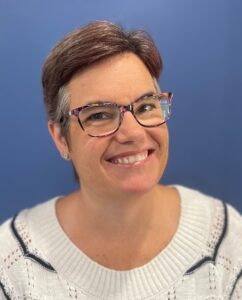Long wait times and inflationary pressure linger at in-person-only medical meeting
The arrival in Seattle of 11,631 attendees for the 2024 Association for Research in Vision and Ophthalmology (ARVO) conference in May was the culmination of a logistical struggle to return to bringing the world of eye doctors together to 2019 levels. Challenges with visa approvals, global economic conditions and attendee procrastination required creative planning on the part of the ARVO team.
Last Minute Registration Shuffle

A recent Maritz study showed that 45% of attendees from 30 trade shows register within four weeks of the event date. The Vision for the Future ARVO 2024 conference didn’t see half of attendees waiting until the month before, but more than 600 were late registrants, according to Lancey Cowan, chief officer for meetings and community engagement at ARVO, the only event of its kind where ophthalmologists can publish their research.
“They don’t register onsite as much as they used to,” she reported. International visitors, in particular, must plan ahead more now (more on that later), but the number who registered in the last month was on par with what she saw in 2019, when 700 registered onsite for the From Bench to Bedside and Back ARVO conference in Vancouver.
Cowan canceled her May 2020 event, allowing researchers to upload their abstract presentations to a library. The event went fully virtual in 2021 and was staged as a hybrid event in 2022 in Denver. The New Orleans 2023 conference drew 9,800 people with some virtual content available. The 2024 conference at Seattle Convention Center was heralded as a return to almost completely in-person, with the ARVO Foundation Gala at the new Seattle Convention Center Summit Building ballroom.
Read More: Seattle Convention Center Summit Expansion
“This year feels a little bit easier,” Cowen said. Only the general sessions and award lectures were recorded. “We found that people weren’t engaging with the recorded content,” she said. Streaming, too, was limited because of the challenge of presenting live to attendees in different time zones who were busy performing surgeries, conducting clinical duties and, generally, working.
While the annual meeting focuses on sharing scientific abstracts in person, an online virtual education department covers education courses and a virtual professional development conference in the fall is where reporting on health outcomes is the centerpiece.
A Global Resource
The annual ARVO conference is known as the best of the best for sharing research in the industry. For that reason, Cowan watches international attendance numbers closely. “Our internationals came back a little this year,” she said.
Read More: Best Practices for Visas and International Travel
Cowan pointed to a confluence of factors constricting the number of international attendees, including extended visa wait times and denials, inflation and exchange rates.
“We have always had visa issues for a set of our membership, and we’ve always had certain regions who can’t travel every year because of funding or cost challenges,” she said. “But this year we had a lot more visa denials and a lot longer visa times and requests for intervention.”
ARVO does provide a letter that states, in Cowan’s paraphrase, “This person is supposed to speak on this date and it’s important that they come,” but that is the extent of intervention the organization can offer. “It’s hard because we have 16 international chapters organized as loosely affiliated groups of members. In India and Egypt and some other countries, if they’ve never had a U.S. visa before, it can take over a year to get an appointment,” Cowan reported. The Middle East, China and India, particularly, are getting a lot of visa denial notices, but other countries are impacted as well.
Read More: Toolkit for Bringing International Conferences Home
Cowan estimates the total number who might be able to come with more efficient screening processes is only a couple of hundred, but the unfortunate result is that often it is students and young people who are denied.
ARVO’s developing country fellowship program is particularly impacted. Out of 12 to 15 participants, every year at least one or two can’t come because of visa denials or inability to get appointments. For those who do qualify, in addition to long wait times, often they have to travel long distances for appointments.
The good news is, after long lockdowns, Asian attendees are back, but even when they have visas, many struggle because the number of flights hasn’t fully recovered since the pandemic and that means increased prices for fewer seats.
When she produced the event in Canada in 2019, a different set of travel challenges awaited. Some attendees were able to get visas to enter Canada who couldn’t get U.S. visas, but international students working in the U.S. on a visa may not have enough entry and exit availability to get back into the U.S. if they leave. Still, Cowan is booked in Canada two more times for future years. “The issues seem to offset each other,” she said.
Exchange Rate Roulette
Financial concerns are another factor in international medical meetings. “People value face-to-face meetings, but organizations might not be able to support multiple people traveling to the U.S. for five days,” Cowan said.
Read More: It’s Time to Demand Support for International Programs
The exchange rate from a developing country is also a challenge in the U.S. A $ 300-a-night hotel room for someone from India could be a month’s salary. “It is getting more expensive for me to do a quality meeting in the U.S. that will attract international attendees,” she said. “We’re fighting against leisure travelers, especially in top-tier cities where we like to go.”
To help counter that narrative, some of the content ARVO shared with attendees on its blog this year included where to go in downtown Seattle on a budget and what to do if it rains:
“ARVO 2024 attendees have a lot to feast their eyes on in Seattle this year. Much has happened since ARVO’s last annual meeting here in 2016, including a major convention center expansion, the addition of several downtown waterfront parks, and upgrades to Seattle Center. If it’s your first time visiting, you are in for a treat whether you’re an outdoors person, a foodie, a music lover, a sunset photographer, or are just looking for a quiet space between meeting sessions. Little can beat Seattle on a sunny day, but if you happen upon one of this year’s 150 rainy days, there are plenty of places to cozy up with some reading, gather with friends and colleagues or seek indoor adventures.”
Cowan tries to plan 10 years ahead. She is in the midst of pre-qualifying about 20 cities she has never really considered because the big cities are too pricey for many attendees. “I’m working on sourcing 2030, 2034 and 2035 right now,” she said.
Back to “Normal”
For now, Cowan is enjoying the afterglow of a successful 2024 event in Seattle and planning for 2025 in Salt Lake City. She is also excited that an ARVO Asia meeting that was being morphed into ARVO International just before the pandemic is coming back. “It is all part of the goal of getting back to normal,” she said.




